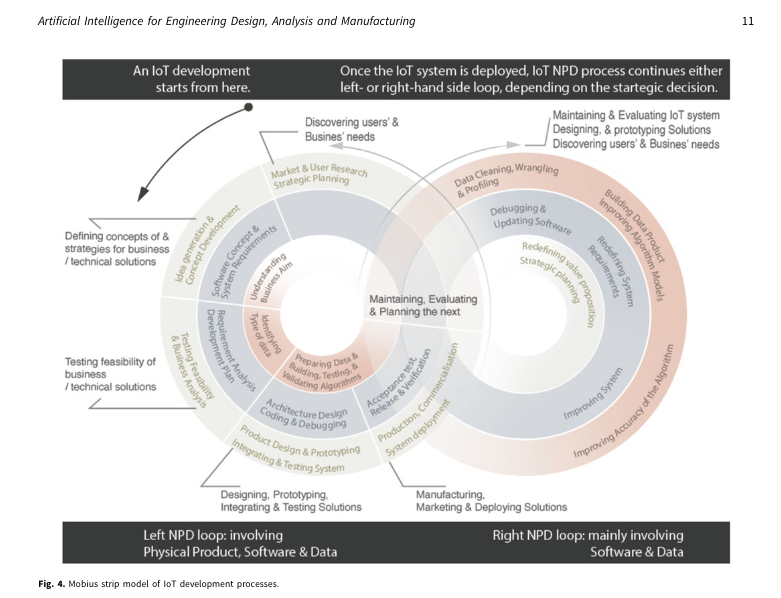With the emergence of Internet of Things (IoT) as a new source of “big” data and value creation, businesses encounter novel opportunities as well as challenges in IoT design. Although recent research argues that digital technology can enable new kinds of development processes that are distinctive from their counterparts in the 20th century, minimal attention has been focused on the IoT design process. In order to contextualize New Product Development (NPD) processes for IoT, this paper comprehensively interrogates existing, and emerging development approaches for products, services, software, and integrated products, and several factors that affect designing IoT. This discussion includes the generic development process, the commonalities and differences of different development approaches, and processes. The paper demonstrates that only a few existing approaches reflect vital characteristics of networked artifacts or the integration of data science within the development model, which is one of the key attributes of IoT design. From these investigations, we propose “The Mobius Strip Model of IoT Development ProcessI,” a conceptual process for IoT design, which is distinctive to others. The continuous loops of the IoT design integrate the attributes and phases of different processes and consist of two different development approaches and strategies. Understanding the particular attributes of the IoT NPD process can help novice and experienced researchers in both feeding and drawing insight from the broader design discourse.
Publications
Continuous cycles of data-enabled design: reimagining the IoT development process
New paper published in the Journal of Artificial Intelligence for Engineering Design, Analysis and Manufacturing

